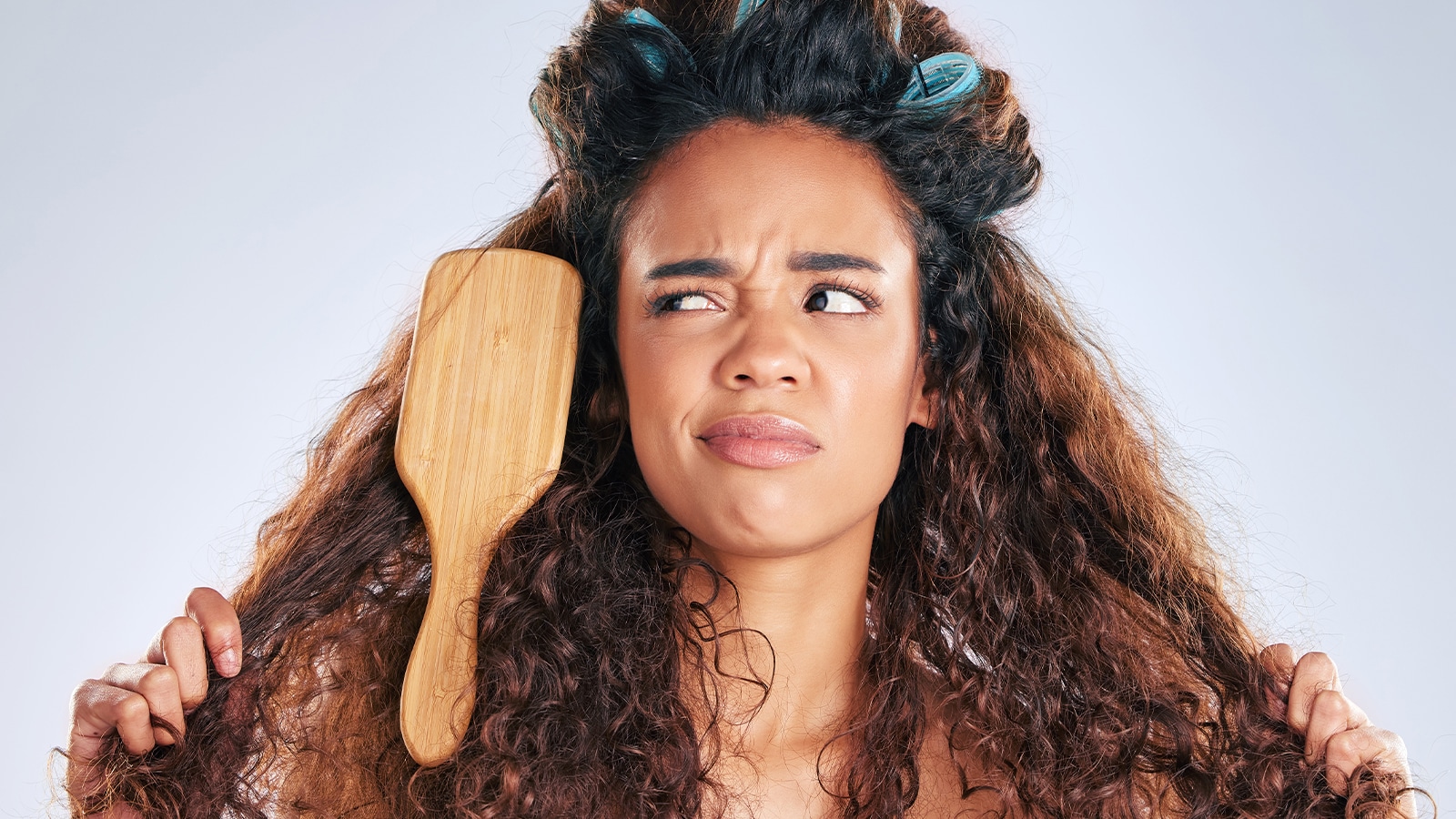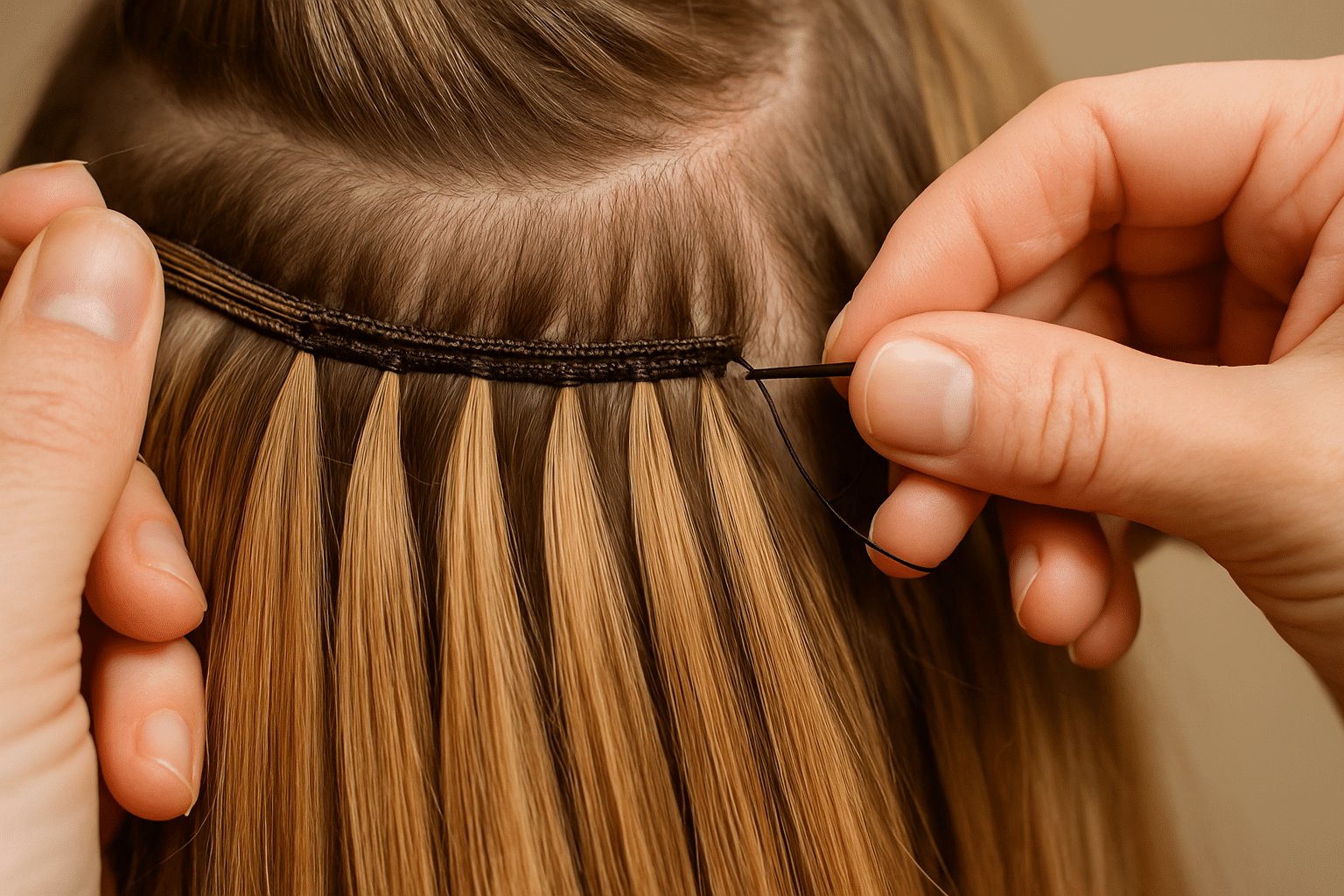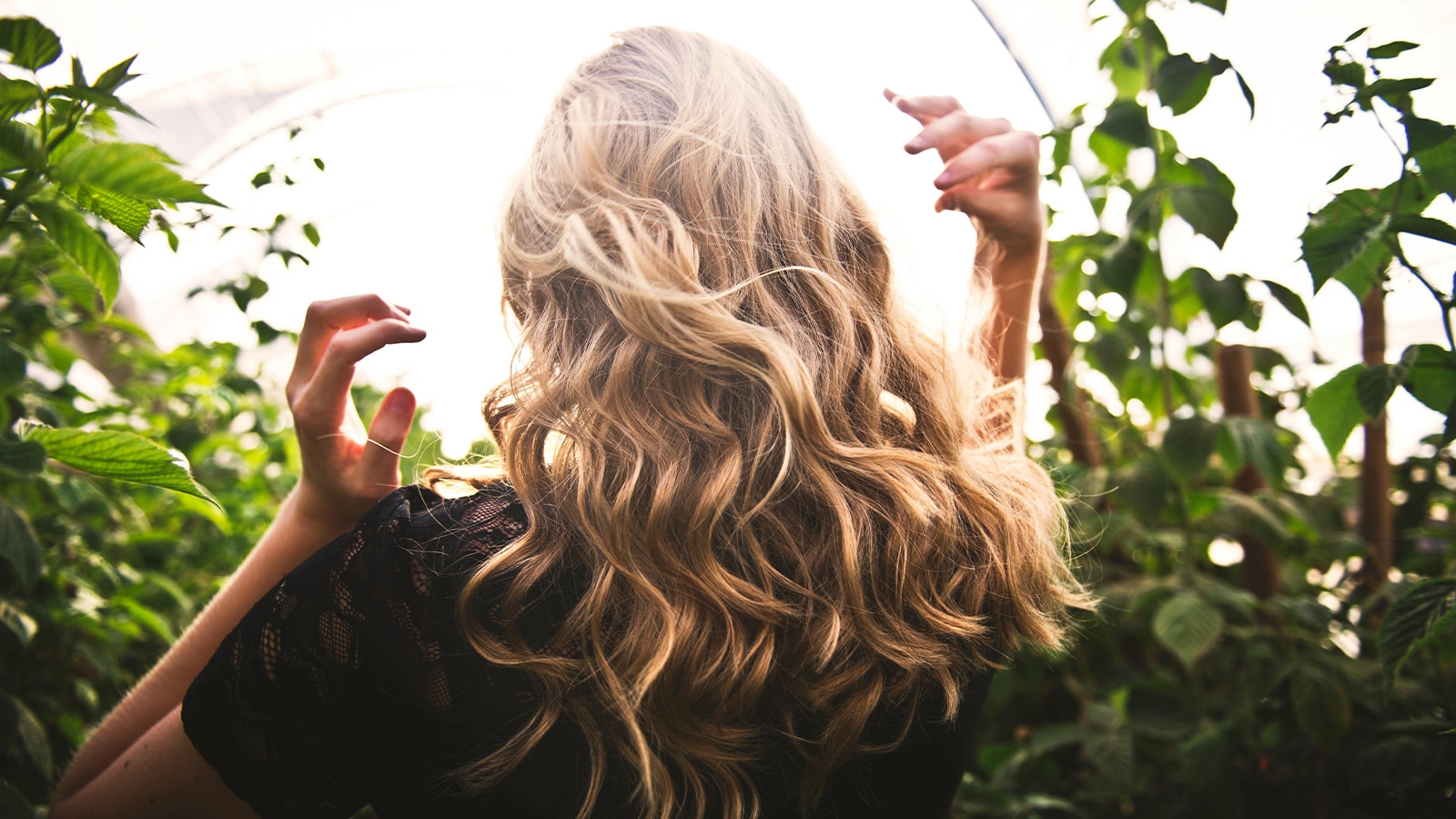 April 4, 2025 | Natural Beaded Rows
April 4, 2025 | Natural Beaded Rows
Hair extensions have long been sought after by men and women, even as far back as the days of Cleopatra and the Egyptians in the Great Pyramids. To have beautiful, full, and thick hair meant you were not only healthy but wealthy as well. In our modern times, extensions are still highly valued and more popular than ever. However, some people have heard the horror stories of extensions gone wrong and have even gone so far as to avoid them due to the rumors of damage to the hair. Today, we highlight the truth and benefits of great hair extensions as well as the cautions you should take before jumping in.
Do Hair Extensions Ruin Your Hair? The Truth Revealed
There are many reasons why women and men consider hair extensions. Some are experiencing hair loss due to age, medication, stress, or hormones, while others with fine hair feel the need to have fuller hair with volume they can be proud to show off. Still, there are some who just want a change in length, because it just takes too long to wait for when it comes to their own natural hair growth. No matter what the reason is for wanting luxurious hair that you can certainly call your own, there are things you should know before making a fully informed decision that could change your look and even your confidence.
Temporary vs. Permanent Damage Potential
First, let’s be real. Anything you do can cause hair damage, whether it’s brushing the hair, using a curling iron, using a flat iron, blow-drying your hair, using damaging hair care products, excessively dying your hair, or even swimming in chlorine pools and the use of sunscreen. Some of the choices we make on a daily basis cause minimal hair damage and can be managed by using the right products that fit your type of hair and by choosing a stylist who is highly trained and knows your specific hair needs.
Other choices can cause permanent damage, such as using glue or other unsafe products on the scalp with cheaper hair extension methods, using products with relaxers improperly, and even excessive bleaching. In order to have the best head of hair, your goal should be to use products and routines that cause the least damage, while having a look that inspires confidence in yourself.
Common Misconceptions About Extensions
With so many hair extension methods on the market, the misconceptions behind them can be numerous. Some of the most common hair extension myths are:
- MYTH: Hair extensions are only for younger generations
- TRUTH: Hair extensions can be for all ages from 17-85 years old
- MYTH: Hair extensions cause damage my natural hair
- TRUTH: With NBR (Natural Beaded Rows) the natural hair is not damaged and they feel as natural as your own hair.
- MYTH: Hair extensions will cause hair loss
- TRUTH: Not all extension methods when done properly cause any more hair loss than what is naturally occurring.
- MYTH: Hair extensions are only for people who want very long hair
- TRUTH: Hair and extensions can be any length from shoulder length and beyond
- MYTH: Hair extensions are only for people who have thin hair
- TRUTH: Hair extensions can be for thicker hair, longer hair, or whatever look you desire
What Research and Hair Experts Say
Hair experts from around the world have all agreed that hair extensions today have been a complete game changer when it comes to making their clients happy. With so many different hair extension types, and methods, clients are elated when they come in feeling hopeless with thinning and lifeless hair to leaving with full, beautiful locks in such a short amount of time.
Unfortunately some of their clients have had previous experiences that have left them disappointed along with damage all while trying to save money and not doing enough research on which methods and type of hair extension can cause damage. Everyone agrees its best to go with highly trained professionals to avoid any hair extensions damage with improper placement or even dangerous application techniques.

Factors That Prevent Damage
One of the main concerns among people who choose hair extensions is how to prevent damage to the natural hair and scalp. This involves many factors to keep your hair in great condition while choosing the extensions that are right for you.
Quality of Extensions: Synthetic vs. Human Hair
The kind of hair used in different types of hair extensions can vary. The two most popular types are synthetic hair and actual human hair. Synthetic hair extensions tend to be more affordable but are also less natural looking and are unable to be styled in different ways. Natural human hair tends to be more costly but can be very versatile with style and can also be dyed to match your hair perfectly. The quality of the two are vastly different and can affect the care of your hair.
Installation Technique and Stylist Expertise
To avoid damage to your hair, it’s essential to find the right hair stylist to assess your hair properly and help you choose the right hair extension. A skilled stylist wants the best hair style for you and will not damage your natural hair with the right hair extensions and the proper placement techniques. This takes countless hours of training and expertise to learn how to section the hair appropriately, create the foundation, skillfully place or sew in the extension, and to add the final blending touches to ensure the natural hair and extensions go together seamlessly.
Your Natural Hair Type, And Type of Hair Extension
When using hair extensions, your hair type, texture and condition can play another major role to avoid damage to natural hair. For example, tape-in hair extensions can put excessive stress on your natural hair, especially if it’s thinning and may even lead to hair loss when removed. Even with proper removal techniques, tape in hair extensions may damage your real hair due to the excessive weight and larger wefts of hair.
Clip-in hair extensions can be great for any hair type and texture but can also feel uncomfortable against the scalp for extended periods of time. Clip in hair extensions also cannot be styled like other types of high quality extensions with your hair being worn in an updo or ponytail. They also need to be removed nightly and stored properly. For higher quality clip-in extensions that use real hair, you can have plenty of options for hair type, style and even dye them to match your own natural color.
For Natural Beaded Row Extensions (NBRs) your hair can be thin, thick, long, short, or any variation in between. Natural Beaded Row Extensions are a popular choice due to the lightweight and natural feel as you run your fingers through the sections of natural hair. NBRs have long been the choice to keep your natural hair healthy while rocking gorgeous full locks on a daily basis.
Learn More About Natural Beaded Rows vs. Clip In Extensions!

Signs Your Extensions Are Damaging Your Hair
If you want to wear hair extensions but afraid extensions may damage your hair, take precaution and find an expert stylist who has years of training to help you make the best choice for your hair. However, if you fear you had hair extensions damage your hair prior, be wary of the signs.
Breakage, Thinning, and Split Ends
Tape-in extensions are notorious for causing hair breakage, and excessive strain on the hair. Thin and fine hair may take issue when it comes to large uncomfortable wefts of hair that just sit on the base of the scalp versus Natural Beaded Rows that blend seamlessly with smaller wefts and beautifully blended sections.
Scalp Irritation, Pain, and Discomfort
In the world of hair extensions, one of the most damaging types of hair extensions are the fusion/bonded extensions. With the excessive heat and chemicals during application and removal, you can experience scalp irritation, weakened hair strands over time, and overall discomfort in general.
Changes in Type of Hair Growth Patterns
Micro-ring hair extensions have also been known to cause damage to natural hair. The rings more often than not come loose if not properly attached and can take some of the natural hair with it. Over time, this can ruin natural hair and can possible cause missing patches of hair that take years to grow back.
How to Minimize Hair Extensions Damage
If you are looking to keep your hair healthy and still love the look and feel of high quality hair extensions, you still have many options. The truth about hair extensions is it comes down to quality of your type of hair extensions, your highly skilled stylist, and your very own hair care routines. Natural Beaded Rows for example take small sections of hair versus larger sections which give your own natural hair a weightless feel that won’t damage your hair over time.
Giving Your Hair Regular “Extension Breaks”
If hair extensions are a regular part of your hair care routine, take breaks from time to time. It’s recommended from most hair extension stylists to take a break from extensions at least once per year or once a quarter depending on your routines.

Proper Care and Maintenance to Protect Your Natural Hair
Another great way to protect your natural hair while rocking beautiful extensions is to be mindful of your hair care routines. A careful and well-thought out routine to care for your hair extensions and natural hair can make a great difference in the long run.
Daily Care Routine for Hair While Wearing Extensions
We all know that taking care of your hair is crucial if you want to look your best. This involves simple daily routines that you can do every morning and night. Some of these daily routines are:
- Brushing your hair and extensions with the proper tools and brushes (wide-toothed comb or loop brush) made specifically for detangling extensions.
- Avoid tangling! Synthetic hair for your hair extensions tend to get tangled and need daily brushing before being stored. It’s recommended to brush synthetic hair with every use.
- Brush gently and start at the ends while slowly working your way back up. Natural Beaded Row Extensions can be treated just as you would treat your natural hair with your brushing routine but daily gentle brushing is still recommended with proper technique.
Washing & Conditioning
Everyone knows that it’s good hygiene to wash your hair, but how often should you wash your hair extensions? The answer is typically every 3 to 6 days depending on your extension type and hair type. If your hair is more on the oily side, you may want to wash your hair sooner. If your hair is drier or prone to extensive breakage, it could be a better method for your hair to stick to a longer duration in between washes. This would be the least damaging and least likely way to keep your extensions lasting while still taking care of your natural hair as well.
When conditioning your hair extensions, it is highly recommended to condition the hair as well to avoid tangling. This will also keep them looking shiny and silky while prolonging their extensive wear over time. Stylists recommend starting at the base and gently working your way down to the ends by taking small sections of natural hair at a time.
Hair Extension Product Selection
For high-quality extensions, your hair product selection is very important. The wrong hair products can have ingredients that are not only damaging to your hair extensions, but can even lead to track slippage or cause excessive weight of the extensions on on your natural locks leading to damage. While the hair products out there are numerous, there are several key components to avoid and several that are a must have.
AVOID Products With: Oil-base, Water-Base, Sulfates, Silicone, Dimethicone, Sticky components, Protein, Formaldehyde & Alcohol
CHOOSE Products With: Sulfate Free Ingredients, Lightweight Ingredients, Silicone-Free, Moisturizing
One of the top sought after quality brands recommended are Oribe and Kerastase. Gold Lust Repair can keep your extensions looking fresh and can even prevent any extensive damage due to everyday wear and tear. Every set of hair extensions is as important as the last one, so caring for your extensions with the right products can certainly make your extension experience a fantastic one.
Sleeping With Extensions
A common question among extension wearers is “Can I sleep in my extensions?” With higher quality extensions such as Natural Beaded Rows (NBRs), yes you certainly can. Part of your bedtime routine should include gently brushing the extensions and your hair for detangling purposes. Before drifting off to sleep, it’s also recommended to sleep in a loose ponytail or braid. Sleeping with the hair loose is an option but experts recommend the braid to prevent tangling and unnecessary pulling if you tend to toss and turn.
As for sleep products that keep your extensions looking fabulous, expert stylists recommend investing in a silk pillow case. Not only is it great for the wear of your extensions by keeping them shiny and smooth, but they are also great for your skin as well.
Learn more about NBR Maintenance 101: Keeping Your Extensions Gorgeous.

Photo by Tim Mossholder from Pexels
Conclusion: Can Hair Extensions Damage Your Hair?
Can hair extensions damage hair? Overall, with everyday brushing, shampooing, styling, and sleeping, hair can sustain normal wear and tear damage. However with high-quality extensions, an expert stylist, proper extension care, the right products, and techniques extensions will cause little to no damage to your natural hair. Experienced stylists such as the ones at Trademark Salon recommend Natural Beaded Rows as the safest, most natural, and highest quality of all the extension choices out there. To learn more on how to get the best extensions out there from the top tier trained experts, call Trademark Salon today and book your consultation. Why wait for tomorrow, when you can have beautiful hair today?!
